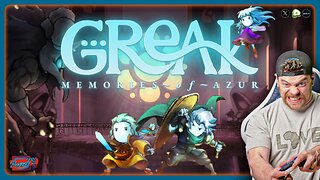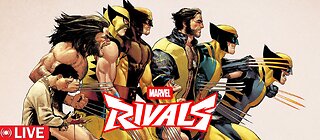Premium Only Content

What is The Tarot?
Journey into the World of Tarot
Have you ever wondered about the mysterious allure of tarot cards? These iconic images, often associated with fortune telling, hold a rich and fascinating history far beyond their mystical reputation. Did you know that playing cards themselves, including the ancestors of tarot, first appeared in Europe during the 14th century? This sparked a wave of cartomancy, the art of divination using cards. Initially, standard playing cards were the most common tools, even augmented with jokers to expand their interpretive possibilities. In France, the 32-card piquet deck remains popular for readings, while in English-speaking countries, the 78-card tarot deck reigns supreme.
But the story of tarot is not a simple one. While often linked to ancient Egypt or Kabbalah, scholarly research firmly places the invention of tarot cards in northern Italy during the mid-15th century. The idea of tarot as a tool for divination is a much more recent development, only gaining traction in the late 18th century. Historian Michael Dummett famously described the tarot's mystical backstory as one of the most successful propaganda campaigns ever. The truth, however, is far more intriguing.
The earliest known evidence of tarot for divination appears in an anonymous manuscript from around 1750. It details rudimentary divinatory meanings for the Tarocco Bolognese cards. Antoine Court and Jean Baptiste Alliette, known as Etteilla, were instrumental in popularizing esoteric tarot in Paris during the 1780s using the Tarot of Marseilles. Interestingly, French tarot players later shifted away from the Marseilles tarot, resulting in its present-day popularity primarily among cartomancers. Etteilla even created a custom tarot deck in 1789 specifically for occult purposes, drawing on unsubstantiated connections to ancient Egypt.
The tarot deck used by esotericists contains 78 cards divided into two sections. The Major Arcana, representing greater secrets, features 22 cards without suits, depicting archetypes such as The Fool, The Magician, and The Empress. The Minor Arcana, or lesser secrets, comprises 56 cards divided into four suits: swords, batons (often called wands), coins (pentacles or disks), and cups (goblets), each containing ten numbered cards and four court cards. The terms Major and Minor Arcana, it is important to note, were not used in early tarot card games and were only introduced later.
Among the most widely recognized esoteric tarot decks are the Tarot of Marseilles, the Rider Waite Tarot, and the Thoth Tarot. Aleister Crowley, creator of the Thoth deck, even acknowledged the obscurity surrounding the tarot's origins, suggesting that its true value lies in its ability to serve as a symbolic representation of the universe.
Ultimately, the journey through tarot demonstrates that even seemingly ancient traditions often have complex and surprising histories. The truth is often more nuanced and fascinating than the legends we tell ourselves. The important lesson here is the value of critical thinking and historical investigation. It’s vital to separate fact from fiction and to appreciate the richness of a story even when the romanticized version turns out to be untrue. The enchantment of tarot lies not only in its imagery but also in its multifaceted story, reminding us to always seek a deeper understanding.
-
 LIVE
LIVE
FyrBorne
13 hours ago🔴Warzone M&K Sniping: Finding Season 5's Best Strafe ARs
156 watching -
 4:47:50
4:47:50
The Why Files
2 days agoCOMPILATION: UFOs and Aliens Vol.2 | They are NOT our friends
75.7K51 -
 54:47
54:47
Side Scrollers Podcast
1 day agoSide Scroller Presents KING OF THE KART | MASSIVE MARIO KART TOURNAMENT
145K10 -
 14:47
14:47
GritsGG
19 hours agoRumble Tournament Dubular! Rebirth Island Custom Tournament!
50.4K3 -
 LIVE
LIVE
CassaiyanGaming
2 hours agoClean Water Charity Stream Day 1 - Black Ops 6 Level Grinding
81 watching -
 LIVE
LIVE
PudgeTV
4 hours ago🟣 Greak: Memories of Azur | Gaming on Rumble | September Charity Water Campaign
90 watching -

LarryDickmanGaming
12 hours agoI am what I am and that's all that I am.
12.5K -
 2:39:02
2:39:02
The Pascal Show
20 hours ago $3.32 earned'HE'S THE DEVIL!' Former Mother In Law Breaks Silence On Jake Haro & Emmanuel Haro Case
25.7K4 -
 5:30:10
5:30:10
SpartakusLIVE
15 hours ago#1 Verdansk Sniper gets HACCUSATIONS because of INSANE Headshots
67.9K4 -
 46:18
46:18
SB Mowing
3 days agoShe was LOSING HOPE but this SURPRISE CHANGED EVERYTHING
56.7K49